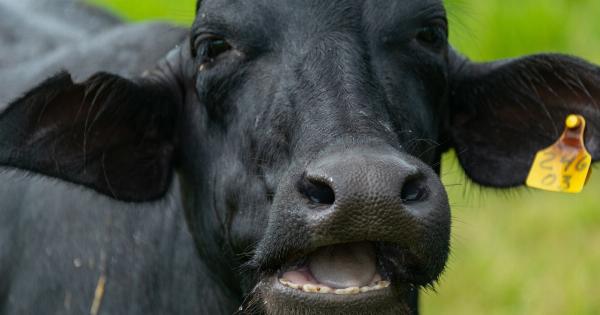Have you ever noticed a white or yellowish coating on your tongue? It may not be something you commonly discuss with your friends, but it is actually quite common and can be an indicator of certain underlying issues.
This coating, commonly known as “lint,” can be temporary or persistent, and understanding its causes and finding ways to fix it can help improve your overall oral health. In this article, we will explore what lint on your tongue means and provide you with some tips on how to get rid of it.
What Causes Lint on Your Tongue?
Before we delve into the causes of lint on your tongue, it is important to understand that your tongue is covered in tiny papillae, which are small, hair-like structures. These papillae play a crucial role in helping you taste and swallow food.
However, they can also trap debris, bacteria, dead cells, and food particles. When these substances accumulate on your tongue, they can form a white or yellowish coating, giving your tongue an appearance similar to lint.
Now that we know what lint on the tongue is, let’s take a look at the various factors that can contribute to its formation:.
Poor Oral Hygiene
The most common cause of lint on the tongue is poor oral hygiene. When you neglect to brush your teeth and tongue regularly, bacteria can flourish in your mouth, leading to the build-up of plaque and debris on your tongue’s surface.
This accumulation can contribute to the formation of lint. Therefore, establishing a good oral hygiene routine that includes brushing your teeth twice a day and gently scrubbing your tongue can help prevent this issue.
Dry Mouth
Another reason for the presence of lint on the tongue is a condition called xerostomia, commonly known as dry mouth. Saliva plays an essential role in maintaining oral health, as it helps wash away food particles and bacteria.
However, if you have a reduced saliva flow, either due to certain medications, medical conditions, or simply not drinking enough water, it can contribute to the formation of lint on your tongue. Staying hydrated, chewing sugar-free gum, and using saliva substitutes can help alleviate dry mouth and reduce the occurrence of lint.
Smoking and Tobacco Use
Smoking cigarettes or using other tobacco products can have various harmful effects on your oral health. One of these effects is an increased risk of developing lint on your tongue.
The chemicals found in tobacco products can irritate your tongue’s delicate tissues and promote excessive growth of bacteria and debris, leading to the formation of lint. Quitting smoking or reducing your tobacco use can significantly improve your oral health and reduce the likelihood of developing lint on your tongue.
Oral Thrush
Oral thrush, also known as oral candidiasis, is a fungal infection caused by an overgrowth of the Candida fungus in your mouth.
This condition can occur in anyone, but it is more common in individuals with weakened immune systems, diabetes, or those taking certain medications like antibiotics or corticosteroids. Along with other symptoms, oral thrush can cause a white coating on the tongue, resembling lint.
Treating the underlying fungal infection through antifungal medications prescribed by a healthcare professional can help eliminate the coating on your tongue.
Dehydration
When you are dehydrated, your body lacks the necessary fluids to maintain proper bodily functions. One of the effects of dehydration can be lint on your tongue.
Insufficient water intake can lead to dry mouth, as mentioned earlier, which can result in the accumulation of debris and bacteria on the surface of the tongue. To prevent dehydration and reduce the chances of developing lint, make sure to drink an adequate amount of water throughout the day.
Mouth Breathing
If you find yourself frequently breathing through your mouth instead of your nose, it may contribute to lint formation on your tongue.
Breathing through the mouth can dry out your oral tissues, reduce saliva production, and increase the likelihood of bacterial growth. Using techniques to promote nasal breathing, such as breathing exercises or clearing nasal congestion, can help reduce the occurrence of lint on your tongue.
How to Get Rid of Lint on Your Tongue
Now that we have explored the various causes of lint on the tongue, let’s discuss some effective methods to get rid of it:.
1. Maintain Good Oral Hygiene
Brush your teeth thoroughly twice a day using a soft-bristle toothbrush and fluoride toothpaste. Don’t forget to gently brush your tongue’s surface to remove any debris or bacteria.
Additionally, using a tongue scraper can help eliminate the coating more effectively.
2. Stay Hydrated
Drink an adequate amount of water throughout the day to prevent dehydration and promote saliva production. This will help wash away bacteria and keep your mouth moist and free from lint.
3. Quit Smoking or Using Tobacco Products
Smoking and tobacco use not only stain your teeth and cause bad breath but also contribute to the formation of lint on your tongue. Quitting smoking or reducing your tobacco intake can significantly improve your overall oral health.
4. Practice Nasal Breathing
If you tend to breathe through your mouth, try to retrain yourself to breathe through your nose. This will help prevent dry mouth and reduce the chances of lint formation on your tongue.
5. Use Mouthwash
Rinsing your mouth with an antimicrobial mouthwash can help reduce the bacterial load in your mouth, minimizing the chances of lint formation. Look for mouthwashes specifically designed for tongue cleaning.
6. Treat Underlying Medical Conditions
If you suspect that an underlying medical condition is causing the lint on your tongue, it is essential to seek professional medical advice. Treating the underlying cause, such as oral thrush or dry mouth, can help eliminate the coating on your tongue.
7. Avoid Excessive Alcohol Consumption
Drinking alcohol excessively can contribute to dry mouth and increase bacterial growth in your mouth, leading to lint formation. Limit your alcohol consumption and drink plenty of water alongside alcoholic beverages to stay hydrated.
8. Improve Your Diet
Eating a balanced diet rich in fruits and vegetables can contribute to better oral health. Avoid excessive consumption of sugary and processed foods, as they can encourage bacterial growth.
Including probiotics in your diet can also help maintain a healthy balance of bacteria in your mouth.
9. Regular Dental Check-ups
Visiting your dentist regularly for professional cleanings and check-ups is crucial for maintaining good oral health.
Your dentist can identify any underlying issues contributing to the formation of lint on your tongue and provide appropriate treatment or guidance.
10. Stress Management
Stress can negatively impact your oral health by increasing your susceptibility to various oral conditions.
Finding effective stress management techniques, such as exercise, meditation, or counseling, can help reduce the chances of developing lint on your tongue.
By following these tips and maintaining good oral hygiene practices, you can significantly reduce the occurrence of lint on your tongue and promote overall oral health.




























